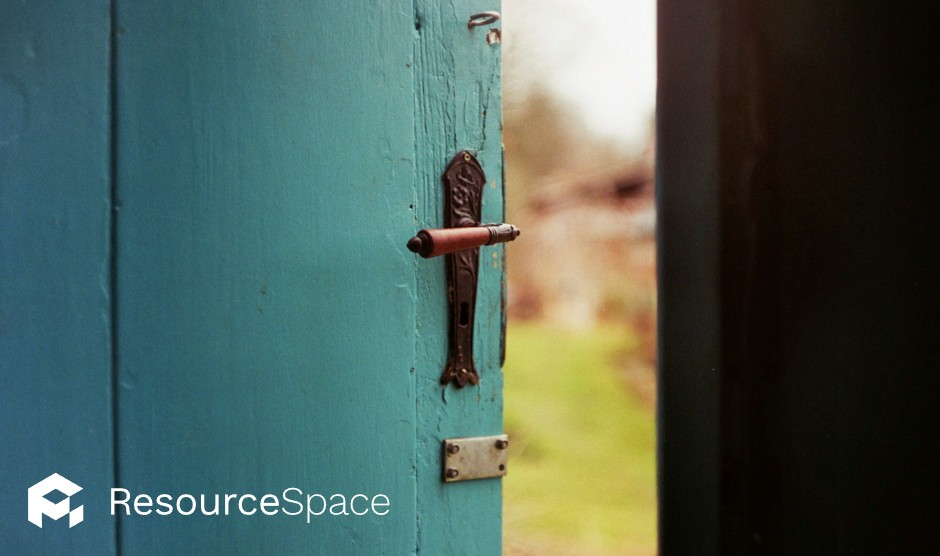
ResourceSpace has changed the way the DEC uses content, making it much easier for us to quickly make assets available both internally and externally during our emergency appeals.
Blog
22nd July 2024

The role of museums and heritage institutions is to bring art, historical artefacts and other works of significant cultural interest to the public. Their job is to educate and inform people about our shared history, and today these institutions are able to leverage technology to ensure these works and objects are shared with the world like never before.
Digital Asset Management is integral to making sure these collections are widely available, empowering heritage institutions to create accessible digital collections that can be enjoyed outside the physical space of a museum or gallery.
We typically think of ‘accessibility’ as referring to making it easier for people with different types of disability to enter or navigate physical spaces, However, accessibility is also an issue museums need to consider when it comes to digital collections—and it means more than simply making content available online.
For example, is digital content adapted to make it possible for people with visual or hearing impairments to consume? Do your digital collections take into consideration people with cognitive impairments or learning disabilities?
Approximately 20% of people in the UK have a long term illness, impairment or disability, while many more have temporary disabilities, so it’s important that you’re taking accessibility seriously when publishing digital collections.
The Equality Act 2010 requires service providers, including museums and art galleries, to make reasonable adjustments to ensure that disabled people can access services. What’s more, for public sector heritage institutions, the public sector Equality Duty requires them to consider all individuals when carrying out their work.
As a museum, art gallery or other heritage institution you have an obligation to ensure disabled people can access a service at no greater cost than a non-disabled person, and this includes digital collections.
The key to ensuring digital collections are accessible is to create multiple versions of assets that are adapted for people with different types of disability. For example, audio transcriptions of written materials will need to be made available to those with visual impairment, while written transcriptions would be needed for those with hearing impairment.
This additional content and the associated assets need to be clearly organised and easily accessible for museum marketing teams, but when these institutions rely on file storage solutions like Box or Google Drive it’s hard to keep track of them. A dedicated DAM system simplifies the process of organising related digital assets, while facilitating seamless sharing with third parties where required.
READ MORE: 9 Essentials for Museum Digital Asset Management software
Let’s take a look at some best practices for heritage institutions wanting to create accessible digital collections.
The Web Content Accessiblity Guidelines (WCAG) are an internationally recognised set of standards that can help content creators make their web content more accessible.
The WCAG are made up of four core principles—perceivable, operable, understandable, and robust—and each principle is made up of testable guidelines.
Note that the WCAG are applicable to accessibility in relation to disability, but also for all users, for example people accessing digital collections via their mobile phones.
You don’t need to remove assets if they’re not immediately 100% accessible. This is an iterative process that takes time to fully implement, but you don’t need to restrict access completely until it’s complete.
Starting a project with accessibility in mind is important and makes a big difference to how easy it is to curate and manage an accessible digital collection. Although accessibility can be addressed later, it reduces time, effort and costs compared to making collections accessible subsequently.
Speak to key stakeholders within the institution and bring in relevant expertise to ensure you fully understand what’s required to make collections accessible for everyone.
Getting a comprehensive handle on accessibility isn’t easy, especially when you don’t have personal experience of accessibility issues, so the more voices the better
READ MORE: Case Study: ResourceSpace + The History of Science Museum
So, if you’re a museum or heritage institution and want to find out how ResourceSpace can help you to create accessible digital collections, get in touch with our experienced team today.
We have extensive expertise in the museum and heritage sector, and we’re trusted by the likes of the History of Science Museum, The Walters Art Museum and The Ashmolean Museum for Digital Asset Management.
To book your free, no obligation DAM demo, click below.
#Museums
#HeritageInstitutions
#Accessibility
#DigitalCollections
#CulturalHeritage
#LegalCompliance
#DAMSystems
#MuseumMarketing
#BestPractice